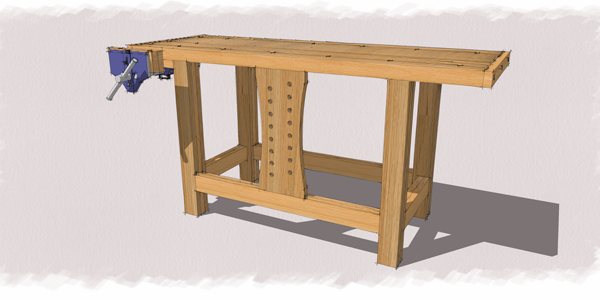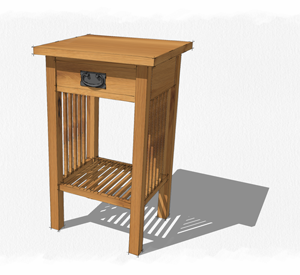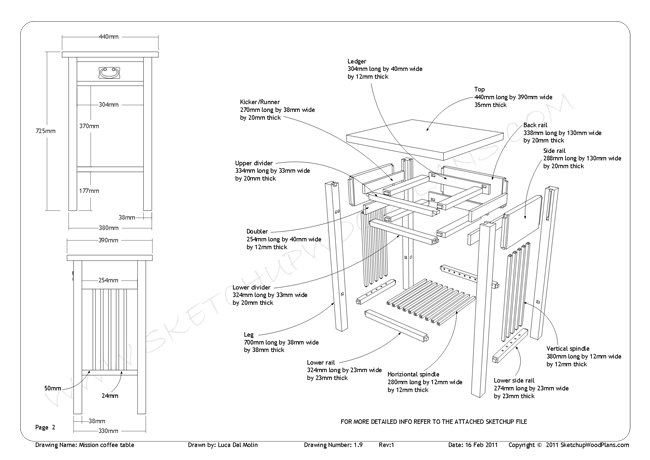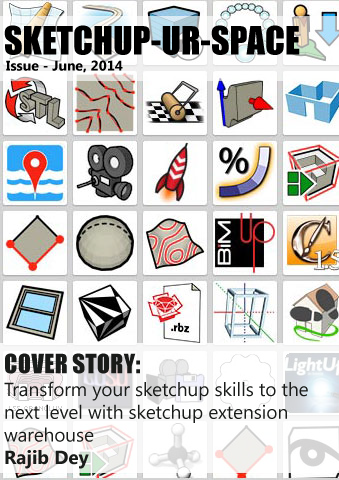Sketchup Resources
- SKP for iphone/ipad
- SKP for terrain modeling
- Pool Water In Vray Sketchup
- Rendering Optimization In Vray Sketchup
- Background Modification In sketchup
- Grass Making with sketchup fur plugin
- Landscape designing in
Sketchup - Apply styles with sketchup
- Bedroom Making with sketchup
- Review of Rendering Software
- Enhancing rendering for 3d modeling
- The combination of sketchup &
BIM - Exterior Night Scene rendering with vray
Author :
GUEST ARTICLE

As a pilot, I’ve been working for several years for the Human Factor department of my airline. During our classes we always teach that a correct consideration of the human interface in our environment can dramatically improve pilot’s performances, thus increasing flight safety. If you are one of those woodworkers who think that this kind of approach only relates to high qualified jobs, like being a pilot is, sorry so say it, but you are wrong. Human factor is everywhere there’s a human activity and woodworking doesn’t escape to this general rule. Maybe this is the reason why I consider having a good plan to take with me to the workshop a fundamental part of my non professional woodworker activity. I’d like to stress these two words – non professional – because the less experienced we are in any human activity, the more we need to brief carefully what we are going to do. In woodworking, briefing means having a plan.
Let’s dive in now to see how this can be applied to practical woodworking. If you think that this is only theory and you are one of those who only want to get his hands dirt, try to keep on reading and then think about it when you will be desperate in your shop for having made a fatal error.
 |
Many times I had the chance to observe professional woodworkers transforming a piece of wood in a beautiful piece of furniture, using their skill and knowledge to face any kind of demanding tasks. The most important advantage they have on their side is experience, i.e. the overall vision, the ability to anticipate the outcomes of a certain work while they do it and to see in a piece of timber what will be the final result. But if we step down to the hobbyist woodworker world, we immediately realize that it’s not possible to claim for such experience. Maybe we’ll build it up through the years, by continually using tools and materials; maybe in the next ten years or so we will take a board of walnut and we’ll see in it the finished piece, but actually it’s not for the immediate. Besides experience there are two other important factors that must be considered in woodworking; task difficulty – it answers the question: “how much demanding is my piece to build? It refers to the number of details we should consider, like realizing complex shapes or cutting unusual joints. The second factor is related to the available resources, i.e. our level of experience and the number and quality of power and hand tools we have in our shop. The ratio between these two parameters, task difficulty and available resources, will determine the efforts we will profuse while building the piece and consequently the level of importance we will give to a well done plan.
To better understand the reasons of these last sentences, we should consider the human being as something with limited cognitive resources. We can actually focus our attention to very few things at a time; think of when you are concentrated in doing something, at work or at home, and at the same time somebody talks to you: if he or she asked you to repeat what has been said, you’d probably had a lot of difficulties to do that because your mind was busy in another task. When we step into our workshop we can apply the same concept, and having the chance to get rid of all the tasks related to the length of a leg rather than the width of a shelf, let us better dedicate our attention to manage all those particulars that otherwise we could not control.
And that’s not all! Having a plan let you effectively manage two more factors: containing the workload and maintaining a situation awareness of what we are doing. When I say workload I refer to the number of things we have to in a certain amount of time (and not till the end of the day!). Once again, having already determined proportions and measures at the computer greatly help us in woodworking.
 |
Maintaining the situation awareness of what we are doing means making rational choices, well thought, that have nothing to do with results - sometimes nice, I agree! – given by causality. It’s evident that a low workload situation is the basis for good situation awareness, and gives us the possibility to manage errors more easily.
Ok, I realize that I dived in a little bit too much! But I’m sure that what I said until now strongly refers to the use of Google SketchUp. Yes, because SketchUp gives us the opportunity to anticipate all those issues we would otherwise encounter once in the workshop. If we make a careful use of SketchUp we can solve with well advance all those problems concerning style, proportions and joints. We don’t have to stay there with a handsaw in our right hand, sweating and hoping that that cut will be the right one at the right measure! We just have to cut that piece, straight and square, the rest should be already established.
Start using SketchUp, consider it as a strategic tool to better and quickly obtain your goal. Don’t be afraid of getting in touch with this software, it’s easy enough to be approached by everyone. In a short time you’ll see your skills improving and consequently your woodworker skills will improve too!


